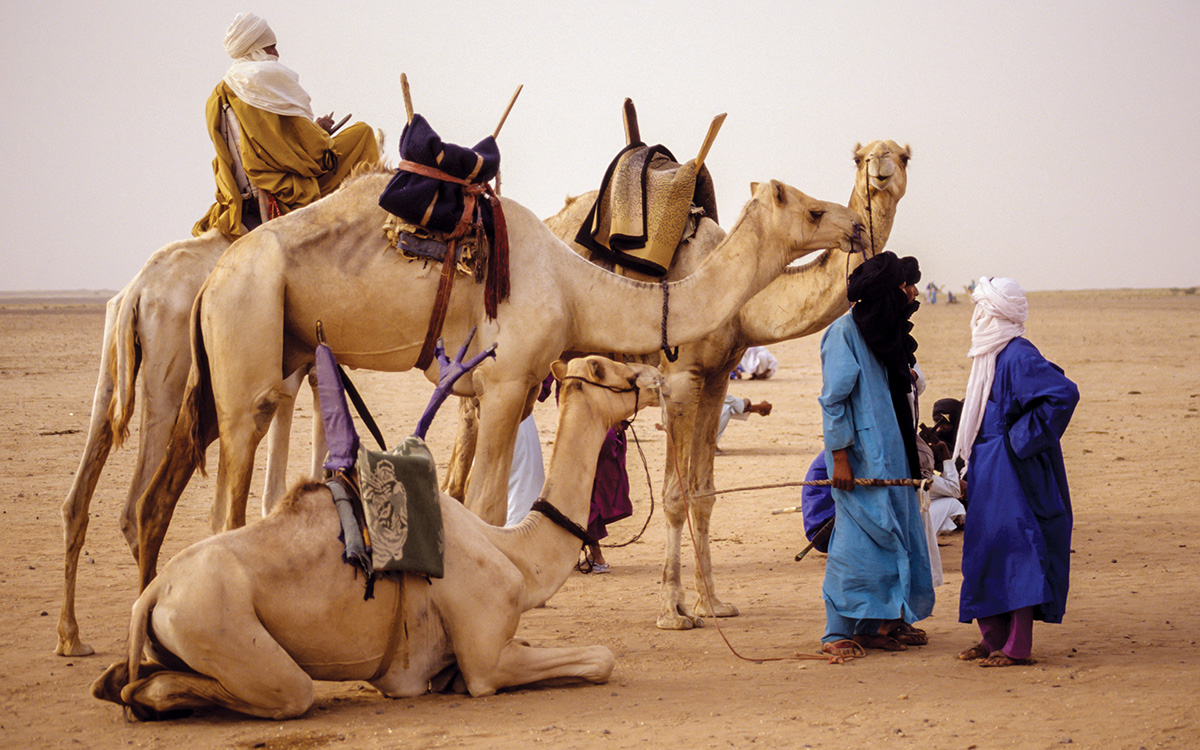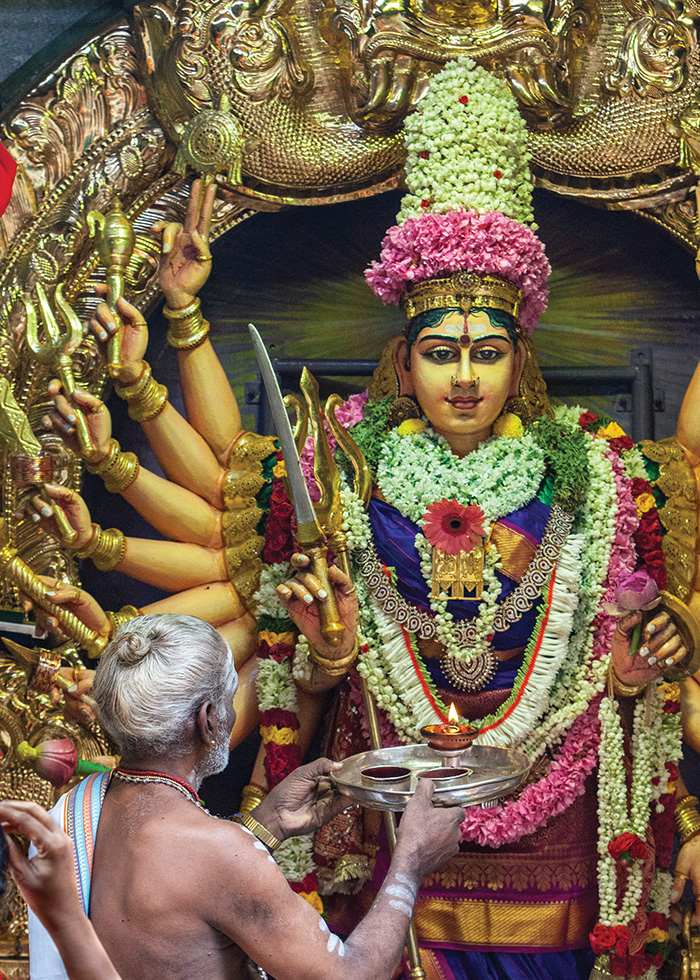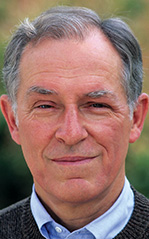Global Photography: From Hobby to Career
For this FSO, commitment to a second career as a photographer was gradual.
BY CHARLES O. CECIL

“Desert Conversation.” In In-Gall, a town in the Agadez region of Niger, Tuareg nomads parade camels at the Cure Salé, an annual gathering.
Charles O. Cecil

“Ensuring Your Safety.” Public surveillance cameras in Yangzhou, China.
Charles O. Cecil
Photography had always been my hobby. As I neared my 60th birthday, I began to think of it as a second career. The market for “stock” photography images to illustrate textbooks and magazine articles was good, and it seemed a reasonable way to contribute to helping Americans understand the wider world around us, since it was the cultures of the developing world that interested me the most. After three years as chief of mission in Niamey, I returned to Washington, D.C., in 1999 for an assignment on the Board of Examiners. In 2001, after 35 years in the Service, I decided to retire, to devote myself, I thought, full time to photography and writing.
It turned out to be a gradual, rather than “cold-turkey” retirement. And it would take six more years and a “cataclysmic event” to decisively launch my post-retirement career as a photographer.
For starters, I really enjoyed giving oral exams for BEX, identifying promising candidates for the Service. Moreover, I enjoyed the opportunities to spend two to three weeks at a time in cities around the U.S., giving exams in places I had never visited. Until March 2006 I continued to work for four to five months a year for BEX in re-employed annuitant status, and traveled overseas at my own expense when I could.
Then in late 2006 I benefited from a sudden, unexpected opportunity when the chargé d’affaires at our newly opened embassy in Tripoli fell ill and had to leave the post. The department needed someone to fill in while our first ambassador went through the process of obtaining agrément and Senate approval. I agreed to go to Tripoli in November and wound up staying eight months. It was a fantastic opportunity to observe Libya under Muammar Qadhafi’s ironfisted rule and to revive my reporting and management skills.
Geologists speak of the cataclysmic event—the earthquake, the 1,000-year flood—that changes the face of the earth far more than the daily erosion of grains of sand carried away by streams, or the wind, or the waves of the sea. The defining event in my long involvement with photography occurred in Tripoli. I knew I could not get 35 mm color slide film developed there, and I didn’t want to risk X-ray damage while sending film back to the States in the pouch for development. To solve the problem, I bought a digital camera, along with lots of memory cards, and never looked back. I have not exposed a piece of film since.
When I returned to the United States in July 2007, I decided it was time to commit myself to this new career full time. By 2010 I had earned enough publication credits to be accepted as a member of the Society of American Travel Writers and met the membership requirements for joining the American Society of Media Photographers. In 2012 I was named a “Best of 2012” ASMP photographer for documenting daily life in two Islamic madrasas in northern India. In subsequent years, I won awards from SATW for portfolios of images of Bali, Bhutan and Singapore. I currently market my images through a British stock agency, Alamy, and through my own website at www.cecilimages.com.
With the freedom the pension provides, I’ve found that photography offers me wonderful outlets for artistic creativity and for continued learning about the cultures of the world.

“Navarathri Celebrations.” A priest performs a ritual prayer before a Hindu deity at Temple Sri Vadapathira Kaliamman in Singapore.
Charles O. Cecil
Because my 10 overseas Foreign Service assignments were all in Muslim countries (six Arab, four in sub-Saharan Africa), I initially focused my attention on Islamic culture, benefiting from the department’s having enabled me to learn Swahili, French and Arabic along the way. But as a good part of the Arab world became more politically volatile during our invasion of Iraq and the events of the “Arab Spring” and its aftermath, I began to cast my gaze further afield. After returning from Libya, I’ve made trips to Nepal, Zanzibar, Cuba, New Zealand, Cambodia, Myanmar, India, Senegal, South Africa, Morocco, Indonesia, Peru, Honduras, England, Tanzania, Malaysia, Thailand, Bhutan and Singapore, plus two trips to China and two to Mexico.
I went back to my community college to learn Spanish; and after twice taking every course they offered, I applied for admission to George Mason University as an undergraduate—successfully, thank goodness!—so I could take a third-year Spanish course. (Senior citizens in Virginia benefit from free tuition at our state universities.) To augment that, I spent weeks in Oaxaca, Mexico, and Antigua, Guatemala, studying in schools that accept foreigners by the week. My camera was always nearby.
While a cataclysmic event moved me to digital photography, the market for photographic images has experienced the erosion phenomenon. The proliferation of digital “point-and-shoots” and cell phones has had the effect of flooding the market with images that many editors and publishers now decide are “good enough” for their purposes. The prices for stock photographic images have fallen considerably in the last 10 years, making it a struggle to recoup travel expenses and make a small profit by producing and selling them. It is easier when I can find an outlet for an article to accompany my images, but it’s the photography I most enjoy.
I couldn’t recommend this work to anyone who does not have a good pension as a safety net. But with the freedom the pension provides, I’ve found that photography offers me wonderful outlets for artistic creativity and for continued learning about the cultures of the world. My new professional associations have introduced me to entirely new networks of creative and knowledgeable individuals. My health is great. Prospects for the next five to 10 years look good.
Read More...
- “Life After the Foreign Service: The Theater and the Salon,” by Michael Feldman, FSJ, April 2020
- “Writing as a Second Career,” by David T. Jones, FSJ, February 2010
- “What Are We Doing Now,” by collected authors, FSJ, May 2016




